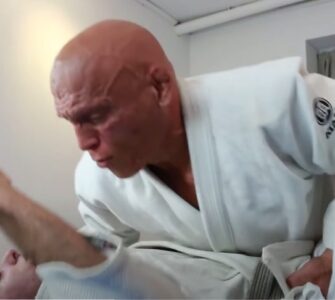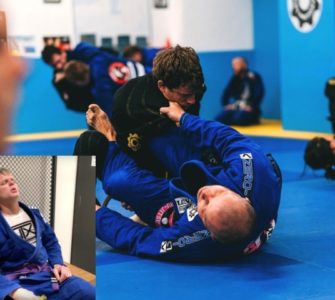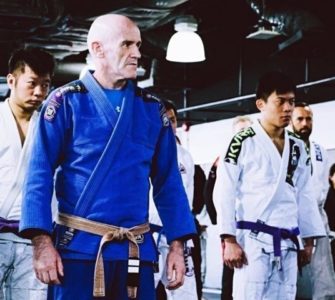The Rubber guard sometimes referred to as Mission Control is a Brazilian Jiu-jitsu technique, which involves the practitioner ‘breaking down’ the opponent into the rubber guard, while maintaining a high level of control. It utilizes extensive flexibility to control the opponent with one arm and one leg. The opposite arm in turn is free to attempt submissions, sweeps or to strike the trapped head of the opponent.
Rubber guard, as well as other innovative guard moves, is attributed to Eddie Bravo who adopted it as a staple technique of his 10th Planet Jiu-Jitsu.
Does rubber guard require extreme flexibility?
This is answered by Dr Kickass, Mike Piekarski, a Doctor of Physical Therapy, Former MMA Fighter, Brazilian Jiu Jitsu brown belt. Follow him on instagram.
Biomechanics of the Rubber guard
The rubber guard system is controversial because many people feel like it requires extreme flexibility and without the flexibility it can lead to injury.
Understanding the rubber guard:
1️⃣Mobility requirements:
The goal is to get one leg high on the back of the opponent to keep the opponent from getting proper posture. This requires a high degree of hip flexion, adduction and external rotation. When one lacks sufficient range of motion then generally another area must compensate.
2️⃣Flexibility vs Mobility:
Flexibility is defined as passive motion while mobility is defined as active motion. Passive motion almost always exceeds active motion. The problem here is you may be able to pull your leg into position but lack active control of that range. This clinching guard the goal is to hold an unwilling opponent in the position. Without the active control you are relying on stability from hip capsule, ligaments and labrum while they are trying to escape the position. With active control you can use muscles to de-load the stress on the hip.
3️⃣Potential injury:
Often with a lack of hip mobility the area that gets injured is the knee. The knee can straighten, bend and rotate but cannot side bend. Insufficient hip mobility often forces the practitioner to put unnecessary stress on the ligaments that resist side bending. Which can lead to injury.
Overall having flexibility / mobility will help with this position, however if someone lacks the mobility they can hip out which decreases the demand for hip mobility.
Generally this system is safe and when used appropriately it can be very effective. The trouble comes when people try to force positions that their body cannot tolerate.
Crack open the strange new world of the 10th Planet system with two Eddie Bravo black belts explaining their dynamic warm up system that gets them loose and limber while also teaching them the unique 10th Planet flows that bring them huge success.
Learn the foundations of the 10th Planet System from two Eddie Bravo black belts.


















